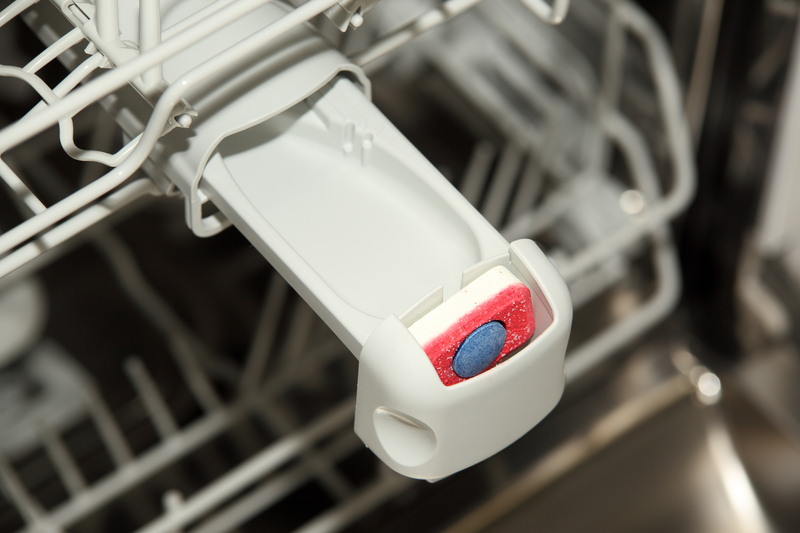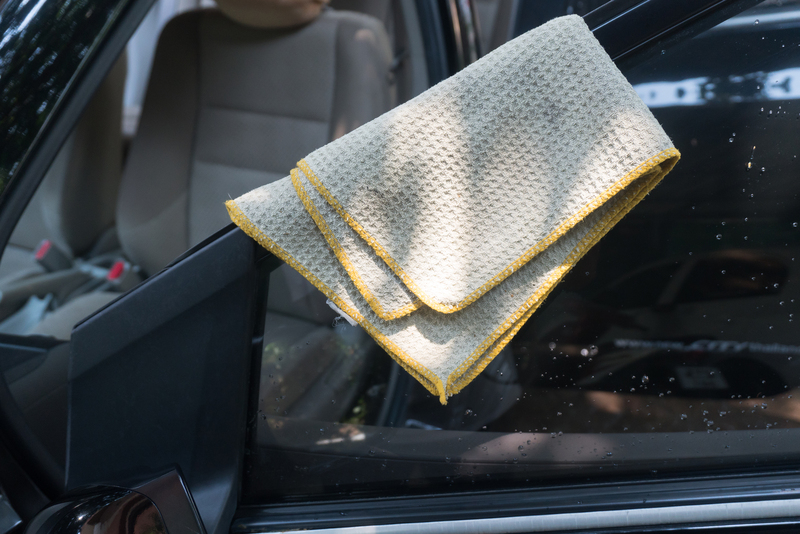Master the Art of Cleaning Stubborn Burnt Residue from Your Stovetop
Posted on 15/08/2025
Master the Art of Cleaning Stubborn Burnt Residue from Your Stovetop
Is your kitchen plagued by stubborn burnt-on stains that just won't go away? Cleaning stubborn burnt residue from your stovetop can seem like an insurmountable chore, but with the right techniques and know-how, your appliance can shine like new. In this comprehensive guide, we'll explore tech-savvy methods, natural remedies, and essential tips for achieving spotless stovetops, regardless of type or material. Discover how to banish burnt food, grease, and grime, and reclaim the joy of cooking in a sparkling clean kitchen.

Understanding Your Stovetop: Why Burnt-on Residue Happens
Before you dive into removing stubborn burnt residue from your stovetop, it's important to understand why it happens. The combination of high heat, spilled food, and unattended cooking are the chief causes. Here are some key culprits:
- Boil-overs: Starchy foods like pasta and rice can boil over, quickly burning onto your stovetop surface.
- Grease Splatters: Frying and sauteing can release tiny grease droplets that cling and carbonize.
- Sugar-Based Spills: Sweet sauces and desserts can caramelize, leaving behind hard, sticky patches.
Each material, whether it's gas, electric coil, or a sleek glass induction cooktop, requires a different cleaning approach. That's why mastering the art of cleaning burnt stovetop residue helps extend the life and beauty of your kitchen equipment.
Essential Tools and Supplies for a Spotless Stovetop
You don't need expensive chemicals to remove burnt-on grime from your range. Gather these basic supplies:
- Baking Soda: A powerful yet gentle abrasive for lifting stains.
- White Vinegar: Known for its degreasing and stain-lifting capabilities.
- Dish Soap: Cuts through leftover grease and food residue.
- Non-abrasive Sponges: Essential to avoid scratching your stovetop surface.
- Microfiber Cloths: For polishing and buffing without streaks.
- Plastic Scraper: Removes stuck-on debris without damaging surfaces.
- Spray Bottle: For diluted cleaning solutions.
- Rubber Gloves: Protect your hands during intensive cleaning sessions.
With these items ready, you'll be equipped to remove stubborn burnt-on stains from your stove efficiently and safely.
The Step-By-Step Guide: Cleaning Stubborn Burnt Residue from Your Stovetop
Step 1: Ensure Safety First
Always make sure that your stovetop is completely cool before attempting to clean it. Unplug electric stoves or turn off the gas supply if possible. This precaution minimizes the risk of burns and electrical accidents.
Step 2: Remove Removable Parts
- Take off burner grates, knobs, and drip pans.
- Soak these in warm, soapy water for 20-30 minutes to loosen grime.
- Scrub gently with a sponge and rinse well.
Step 3: Tackle Loose Debris
Begin by wiping away any loose crumbs with a damp cloth. For better results, use a vacuum with a hose attachment to suck up stubborn food particles caught in crevices.
Step 4: Apply Baking Soda Paste
- Mix 3 parts baking soda with 1 part water to create a thick paste.
- Spread the paste generously over burnt areas and stubborn residue.
- Let it sit for 15-30 minutes to break down tough, burnt-on food stains.
Step 5: Use Vinegar for Maximum Cleaning Power
- Fill a spray bottle with equal parts white vinegar and water.
- Spritz over the baking soda paste; this creates a fizzing reaction that helps lift stains.
- Wait for 5-10 minutes allowing the reaction to penetrate deep into the residue.
Step 6: Scrub Gently and Wipe Clean
- Use a non-abrasive sponge or a soft-bristle brush to scrub in circular motions.
- Use a plastic scraper for stubborn spots, applying gentle pressure to avoid scratching.
- Wipe away loosened debris with a damp microfiber cloth.
Step 7: Polish and Shine
Buff the cleaned areas with a fresh, dry microfiber cloth. If dealing with stainless steel, wipe along the grain to prevent streaks.
Special Tips for Glass and Ceramic Stovetops
- Never use steel wool or rough scouring pads--these cause permanent micro-scratches.
- Commercial cooktop cleaners are safe for glass, but homemade methods can be just as effective.
- If a burnt-on spot persists, lay a hot, damp cloth on the area for a few minutes, then gently scrape with a plastic tool designed for glass surfaces.
Alternative Natural Cleaners for Burnt Residue Removal
Want to deep clean burnt residue from your stovetop without harsh chemicals? These natural options work wonders:
- Lemon Juice: Thanks to its acidity, lemon can help loosen burnt food and brighten surfaces. Squeeze fresh lemon juice over stains, let sit for 10 minutes, and scrub.
- Salt: Acts as a mild abrasive when combined with water or lemon juice, ideal for tough spots.
- Hydrogen Peroxide: Safely whitens and sanitizes. For extreme cases, apply hydrogen peroxide mixed with baking soda, allow to fizz, and then wipe clean.
How to Remove Burnt Grease from Gas Stovetops
Gas ranges have unique cleaning requirements due to their intricate burner components. To clean stubborn burnt grease from gas burners:
- Lift off burner caps and heads. Soak these in a mixture of baking soda and warm water for 20 minutes.
- Scrub with a toothbrush or soft brush to dislodge carbonized residues.
- Use a toothpick or pin to gently clean burner holes (never use metal or force, as this can enlarge the openings).
- Dry thoroughly to avoid sparking or uneven flame when reassembling.
Best Practices for Electric Coil and Induction Stovetops
Cleaning Electric Coil Burners
- Remove coils and drip pans.
- Never submerge coils in water--wipe gently with a lightly damp cloth instead.
- For stubborn residue on drip pans, soak in vinegar, then scrub clean.
Cleaning Induction and Glass Cooktops
- Wipe away spills as soon as the surface cools to prevent burnt-on stains.
- For tough residue, use a razor scraper specifically made for glass or induction surfaces.
- Polish afterward with a recommended glass cooktop cleaner for a streak-free shine.
Common Mistakes to Avoid When Cleaning Burnt Stovetops
Even with the best intentions, some cleaning missteps can damage your appliance or make the problem worse. Avoid these pitfalls when removing stubborn burnt residue from your stovetop:
- Using harsh abrasives: Steel wool or abrasive powders can scratch and dull your finish.
- Letting spills sit: The longer spills remain, the harder they are to remove.
- Neglecting hidden spots: Debris builds up in crevices, causing more stubborn stains over time.
- Not rinsing thoroughly: Soap residue can attract more dirt and look streaky.
Pro Tips for Keeping Your Stovetop Clean
Once you've invested the effort to remove burnt-on food residue from your stovetop, keep it looking pristine with these maintenance tips:
- Wipe daily: Quickly wipe spills after each use to prevent build-up and discoloration.
- Deep clean weekly: Incorporate a deeper cleaning session once a week, especially after heavy cooking.
- Use burner liners: Foil or silicone liners catch drips and are easily replaced or washed.
- Mind the cookware: Use pots and pans that fit burners to minimize boil-overs.

FAQs about Cleaning Stubborn Burnt Residue from Stovetops
Can I use oven cleaner on my stovetop?
Oven cleaners can be too harsh for many surfaces, especially glass and ceramic. Stick with baking soda and vinegar for safe, effective results.
Is it safe to use a razor blade on my glass cooktop?
Yes, provided you use a special razor scraper designed for glass surfaces. Hold at a low angle and apply light pressure to avoid scratching.
Why do some burnt stains keep coming back?
Sometimes, underlying grease or carbonized build-up isn't fully removed. Repeat the process in stubborn spots, and always wipe up fresh spills quickly to prevent recurrence.
What if my burner won't light after cleaning?
Moisture in the igniter or burner holes can delay ignition. Let all parts air dry completely, or use a hair dryer to speed up drying.
Conclusion: Achieving a Spotless, Burnt-Free Stovetop
In summary, mastering the art of cleaning stubborn burnt residue from your stovetop is less daunting when you follow proven methods suited for your appliance type. With patience, the right tools, and a bit of elbow grease, you can keep your kitchen centerpiece sparkling clean. Not only does a tidy stovetop look great, but it also performs better and lasts longer.
Commit to a regular cleaning routine, act fast on spills, and use the natural, effective cleaning solutions outlined in this guide. A pristine, burnt-free stovetop doesn't just elevate your home--it rekindles your love of cooking, one spotless meal at a time!





